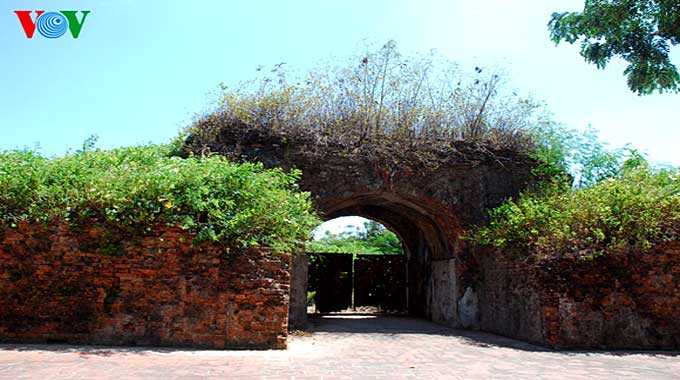Quang Tri citadel on the bank of river Thach Han was the site of fierce battles during the US war in Viet Nam. The site became the tomb of tens of thousands of Vietnamese soldiers who sacrificed their lives for national liberation.

Quang Tri citadel was built in 1809 by order of King Gia Long. Initially, it was made of clay. In 1837, during the reign of King Minh Mang, it was rebuilt in brick.
Built in a square shape with a circumference of 2 km, the citadel covers 20 ha and is surrounded by a moat. In the feudal era, Quang Tri citadel was a military fortress and also an administrative, political and economic center.
After the signing of the Geneva Agreement in 1954, the 17th parallel became a military line separating North and South Viet Nam. Quang Tri township was then a political, military and economic hub of Quang Tri province.
The war changed the course of history and the citadel became more important during the Viet Nam Republic. Quang Tri was the place where several important military events took place between 1954 and 1971. But the climax, without a doubt, was the 81-day fight in the summer of 1972, said the tour guide.
In the 81-day fight, the US army and the southern Vietnamese regime mobilized a large number of troops and ammunition to capture the citadel. Heavy artillery fire during these 81 days virtually razed the citadel. Only a few parts of the citadel still stand.
At the request of provincial authorities, partial restoration was undertaken between 1993 and 1995. The moat, some of the bridges and the main doors were restored. A monument in memory of the 1972 battle was built in the middle of the citadel. 81 bronze reliefs representing the 81 days of the battle were installed.
Cap Thi Thien Trang, Head of the Site Management Committee, said with the help of the Party and state, Quang Tri citadel is being restored to become a memorial site where people can pay tribute to the fallen heroes. Unlike the Truong Son and National 9 cemeteries where every soldier, who fell in battle has a grave, the Citadel is the shared grave of the thousands of soldiers who lost their lives during these 81 days defending the citadel.
40 years after the war, General Vu Quoc Hung, Former Director of the Institute of National Defense Strategies and his former comrades returned to the citadel for a visit.
“This is not the first time that I’ve been back here. This is where my friends and I fought during the war. Every time I visit, I am very touched because we were lucky enough to survive while many of our comrades remain here forever,” Hung said.
Quang Tri citadel attracts not only war veterans and fallen soldiers’ families but also tourists of all ages.
Le Thi Tam, a tour guide, said“Many tourists come between March and September, especially on Reunification Day, April 30, and War Invalids and Martyrs’ Day, July 27, to pay their respects to the fallen soldiers. I have different feelings while introducing the citadel to different groups. When I talk with war veterans, I speak of honor because they are the ones who fought for us. For the younger generation, I serve as a bridge between past and present. I want to help them understand more clearly about the glorious history of our predecessors”.
Quang Tri citadel is a special national relic, a venue, where the younger generation and tourists learn something about Viet Nam’s patriotic tradition and glorious history.